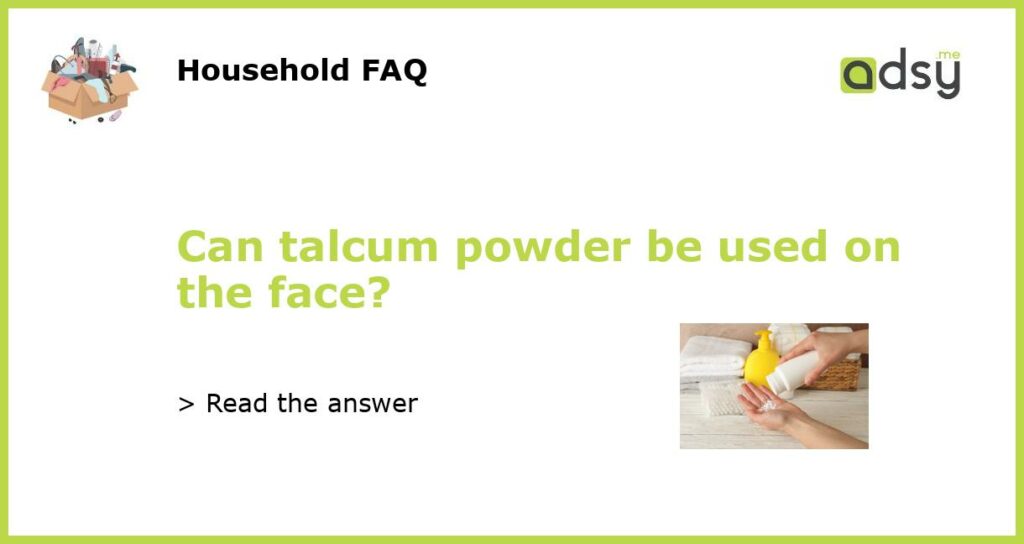Yes, talcum powder can be used on the face, but with caution.
Many people use talcum powder as a part of their daily beauty routine. It is commonly used to absorb excess moisture and reduce oiliness on the skin. However, there are a few factors that need to be considered before using talcum powder on the face.
Understanding talcum powder
Talcum powder, also known as baby powder, is made from talc, a mineral composed of magnesium, silicon, and oxygen. It has a silky texture and absorbs moisture well. Talcum powder has been used for decades for various purposes, including as a cosmetic product.
Benefits of using talcum powder on the face
Talcum powder can be beneficial to use on the face for certain reasons:
- Oil control: Talcum powder has oil-absorbing properties, which can help control excess oil and shine on the face.
- Moisture absorption: If you have oily or sweaty skin, talcum powder can help absorb excess moisture, keeping your skin dry and fresh.
- Pore minimization: The fine particles in talcum powder can also help blur the appearance of pores, giving your skin a smoother look.
Potential risks and considerations
While talcum powder can provide some benefits when used on the face, there are a few risks and considerations to keep in mind:
- Health concerns: Talcum powder has been linked to health issues, particularly when used in the genital area. In some cases, it has been associated with an increased risk of ovarian cancer. However, the studies on this topic have been inconclusive, and more research is needed to establish a definitive link.
- Allergies and sensitivities: Some people may be allergic or sensitive to talcum powder. It can cause skin irritation, rashes, or even respiratory problems in certain individuals.
- Potential for clogged pores: Talcum powder is a fine powder that can potentially clog pores if used excessively or if proper cleansing is not done. This can lead to breakouts and acne flare-ups.
How to use talcum powder on the face
If you decide to use talcum powder on your face, it is important to do so correctly to minimize the potential risks:
- Choose a talcum powder specifically formulated for the face: Look for products that are specifically designed for facial use. These powders are usually finer and less likely to irritate the skin.
- Use it sparingly: Only apply a small amount of talcum powder to areas of the face that tend to get oily or sweaty, such as the T-zone. Avoid applying it all over the face, as this can lead to a cakey or powdery appearance.
- Blend well: Use a powder brush or sponge to evenly distribute the powder and avoid a patchy or uneven finish.
- Remove excess powder: After applying talcum powder, gently brush away any excess with a clean brush or tissue. This will help prevent clogged pores.
- Consider alternatives: If you have sensitive or acne-prone skin, it may be best to avoid using talcum powder on the face altogether. Look for alternative products, such as oil-absorbing sheets or mattifying primers, that can achieve similar results without the potential risks.
Conclusion
Talcum powder can be used on the face to absorb excess oil, control shine, and minimize the appearance of pores. However, it is important to exercise caution and consider the potential risks and individual sensitivities. If you decide to use talcum powder on your face, choose a product specifically formulated for facial use, use it sparingly, and ensure proper blending and removal of excess powder. For those with sensitive or acne-prone skin, it may be wise to explore alternative options to achieve similar results without the potential risks associated with talcum powder.






